To create perfectly balanced perfume oil blends, you'll need to follow the 30/50/20 rule: 30% base notes for lasting depth, 50% middle notes for the heart, and 20% top notes for first impressions. Start with a 2-3% dilution in carrier oils (12-18 drops per ounce) for general use. Use precise measurements and let your blend rest for a week before adding alcohol. Following expert guidelines and testing methods will help you master the art of fragrance creation.
Understanding Perfume Oil Note Categories and Proportions
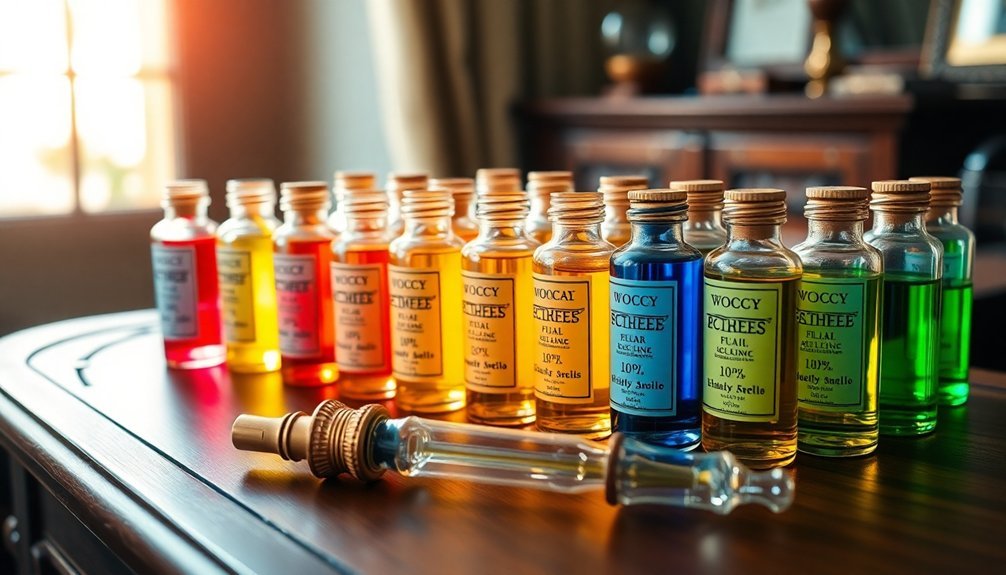
When creating your own perfume blend, understanding the three distinct note categories and their proportions forms the foundation of successful fragrance formulation.
The art of blending essential oils relies on the 30/50/20 rule, which recommends using 30% top notes, 50% middle notes, and 20% base notes to achieve a balanced aroma.
Top notes, like Bergamot, provide the initial impression but evaporate quickly. Middle notes serve as the heart of your fragrance, developing after top notes fade and creating the core scent. Base notes, such as Sandalwood, add depth and longevity, lingering for hours after application.
You'll need to evaluate each note's volatility when crafting your blend. This guarantees your perfume evolves harmoniously over time, creating a well-structured fragrance that flows smoothly from one note to the next.
Essential Oil to Carrier Oil Dilution Standards
Before creating your perfume oil blend, understanding proper dilution ratios guarantees both safety and effectiveness.
For general use, aim for a 2-3% dilution ratio, which means adding 12-18 drops of essential oils per ounce of carrier oil.
If you're blending for sensitive skin or children, reduce the ratio to 1% (6 drops per ounce). Pregnant women and those with health conditions should stick to 0.5% or less (3 drops per ounce) and consult healthcare providers first.
For therapeutic purposes like pain relief or relaxation, you can increase the concentration to 5% (30 drops per ounce).
Always perform a patch test before applying your blend to larger skin areas. This simple step helps guarantee you won't experience adverse reactions to your carefully crafted perfume oil mixture.
Base, Heart, and Top Note Blending Ratios
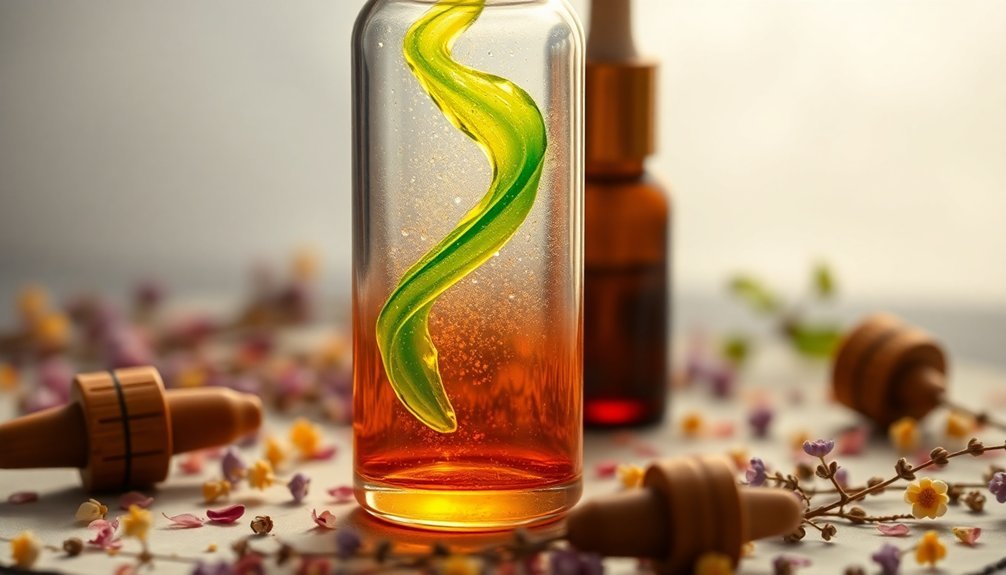
Creating a balanced perfume oil blend requires understanding the classic 30/50/20 rule of fragrance composition.
To follow this proven formula, you'll want to use 30% base notes, 50% heart notes, and 20% top notes in your essential oils mixture.
When working with a 10ml bottle, aim for exactly 100 drops total.
Start with 30 drops of base notes like Sandalwood or Patchouli, which will provide lasting depth to your perfume.
Next, add 50 drops of heart notes such as Lavender or Rose – these form your fragrance's core character.
Finally, include 20 drops of top notes like Citrus or Bergamot, which create that initial burst of scent.
You'll notice the top notes fade within 30 minutes, while heart notes persist for hours, and base notes anchor your blend throughout the day.
Testing and Adjusting Fragrance Concentrations
Testing your fragrance concentrations requires precision and patience to achieve the perfect balance. When blending essential oils, you'll want to start with a 10ml atomizer bottle using a 20-70-10 ratio of oils, alcohol, and distilled water.
Make sure to precisely measure 40 drops total, with your base note oils taking up half the composition.
- Begin with 20 drops of base note oils for a strong foundation
- Add 10 drops each of middle and top notes for balanced complexity
- Let your blend rest in darkness for at least one week before adding alcohol
- Monitor your fragrance after a month to check for overwhelming alcohol scent
- Document all measurements and ingredients for future reference
This systematic approach helps you perfect your fragrance concentrations while maintaining consistency in your perfume-making journey.
Measuring and Scaling Your Perfect Blend
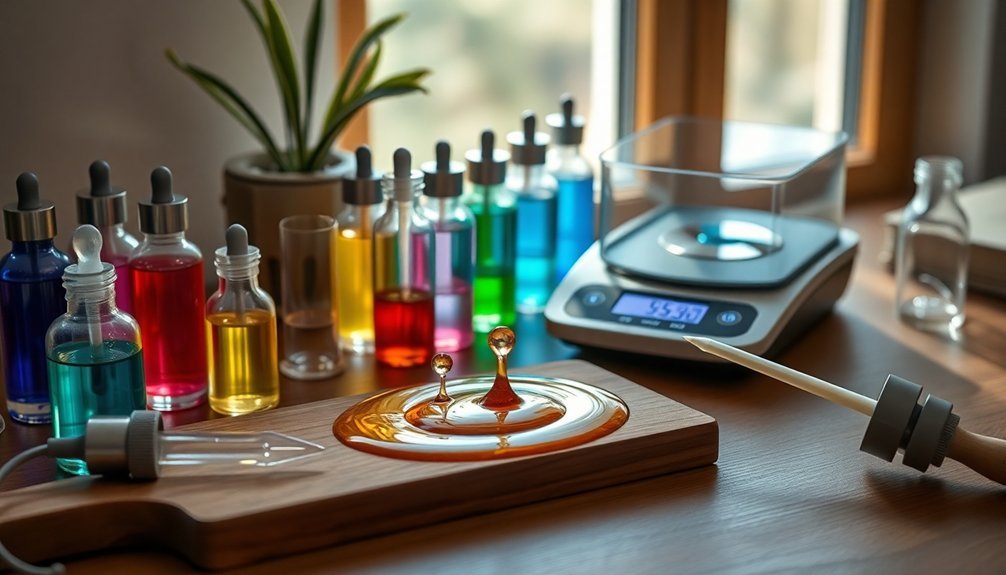
Once you've developed your ideal fragrance blend, measuring and scaling it accurately becomes essential for consistent reproduction. You'll need precise measurements when working with essential oils to maintain the perfect balance between top notes, middle notes, and base notes using the 30/50/20 rule.
| Component | Measurement Guide |
|---|---|
| Essential Oils | 20% (40 drops per 10ml) |
| Alcohol | 70% (140 drops per 10ml) |
| Water (optional) | 10% (20 drops per 10ml) |
| Scale Usage | Tare between additions |
| Total Volume | 200 drops = 10ml |
For scaling larger batches, always use a pipette for accurate measuring of your oils. When blending a 30ml bottle, you'll need approximately 2.5 grams of essential oils at 10% dilution, then top with ethanol to reach 25 grams total weight.
Frequently Asked Questions
What Is the Ratio for Blending Perfume?
You'll want to blend your perfume using a 20-70-10 ratio: 20% essential oils, 70% alcohol, and 10% distilled water. For a 10ml bottle, that's about 40 drops oils and 140 drops alcohol.
What Is the 30/50/20 Rule for Perfume?
You'll want to blend your perfume using 30% top notes for the initial impression, 50% middle notes for the main body, and 20% base notes to anchor the fragrance and provide lasting depth.
What Is the 30/50/20 Rule for Essential Oils?
You'll create balanced essential oil blends by using 30% top notes (like citrus), 50% middle notes (like lavender), and 20% base notes (like sandalwood). This ratio guarantees your blend's harmonious scent and therapeutic benefits.
How to Blend Perfume Oil?
Combine your oils following the 30/50/20 rule: mix top, middle, and base notes in a clean bottle. Let them rest for 48 hours, then add your carrier. You'll need precise measurements for best results.
In Summary
Now that you've learned the art of blending perfume oils, you'll be ready to create your own signature scents. Remember to start with small test batches using the 30-50-20 ratio for base, heart, and top notes, and don't forget proper dilution with your carrier oil. Keep detailed notes of your successful blends, and you'll soon develop a collection of personalized fragrances that truly reflect your style.
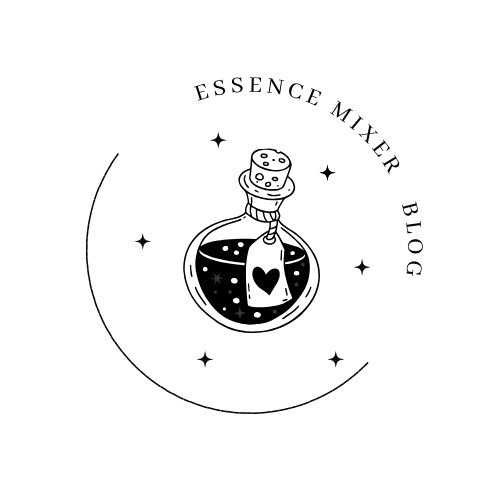
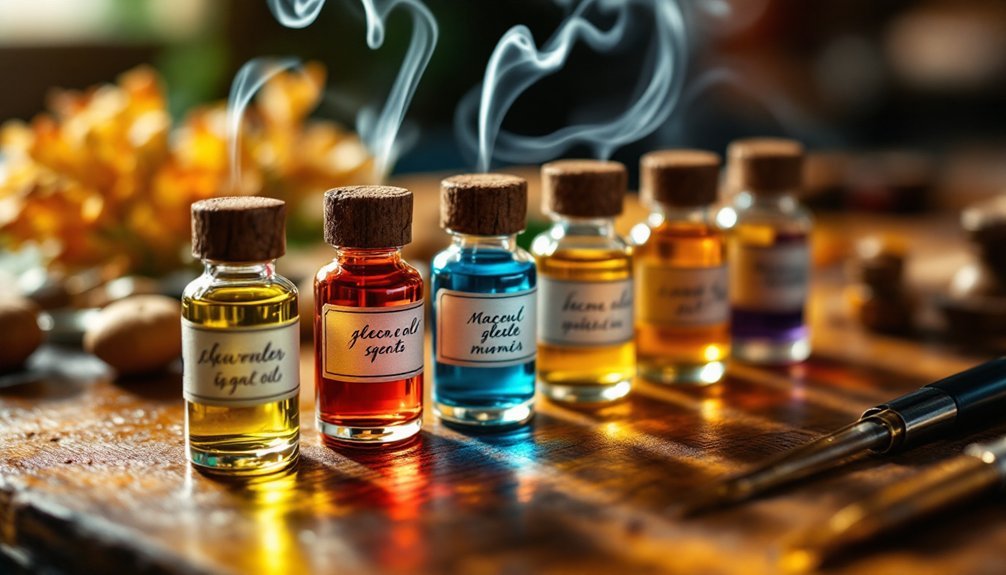



Leave a Reply